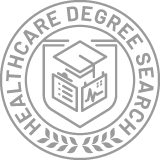Associate Degrees in Alternative Medical Support Services
Education Levels of Alternative Medical Support Majors
During the most recent year for which data is available, 19 people earned their associate degree in alternative medical support. This earns it the #22 spot on the list of the most popular associate degree programs in the nation.
The following table shows the number of diplomas awarded in alternative medical support at each degree level.
| Education Level | Number of Grads |
|---|---|
| Graduate Certificate | 45 |
| Master’s Degree | 39 |
| Bachelor’s Degree | 24 |
| Associate Degree | 19 |
| Undergraduate Certificate | 9 |
Earnings of Alternative Medical Support Majors With Associate Degrees
At this time, we do not have the data to estimate the median earnings for this class of people.
Student Debt
We do not have the data to calculate the median and range of debt loads for alternative medical support students who are associate degree holders.
Student Diversity
More women than men pursue their associate degree in alternative medical support. About 100.0% of graduates with this degree are female.
| Gender | Number of Grads |
|---|---|
| Men | 0 |
| Women | 19 |

The racial-ethnic distribution of alternative medical support associate degree students is as follows:
| Race/Ethnicity | Number of Grads |
|---|---|
| Asian | 0 |
| Black or African American | 3 |
| Hispanic or Latino | 4 |
| White | 12 |
| International Students | 0 |
| Other Races/Ethnicities | 0 |

Most Popular Alternative Medical Support Programs for Associate Degrees
There are 3 colleges that offer an associate degree in alternative medical support. Learn more about the most popular 3 below:
Midwives College of Utah tops the list of the most popular school in the U.S. for alternative medical support majors who are seeking their associate degree. The average in-state tuition for full-time undergraduates is $7,760 per year, while in-state graduate students, on average, pay $7,760 per year. During the most recent year for which we have data, 9 people received their associate degree in alternative medical support from Midwives College of Utah.
The 2nd most popular school in the country for alternative medical support majors who are seeking their associate degree is Southwest Wisconsin Technical College. During the most recent year for which we have data, 8 people received their associate degree in alternative medical support from Southwest Tech. Of these students, 100% were women and 41% were members of underrepresented racial-ethnic groups.
Alternative Medical Support Concentrations
| Major | Annual Degrees Awarded |
|---|---|
| Direct Entry Midwifery | 19 |
Explore Major by State
Alabama
Arkansas
Connecticut
Florida
Idaho
Iowa
Louisiana
Massachusetts
Mississippi
Nebraska
New Jersey
North Carolina
Oklahoma
Rhode Island
Tennessee
Vermont
West Virginia
Related Majors
Below are some popular majors that are similar to alternative medical support that offer associate degrees.
| Major | Annual Degrees Awarded |
|---|---|
| Nursing | 82,967 |
| Allied Health Professions | 29,240 |
| Health/Medical Admin Services | 17,166 |
| Allied Health Services | 16,805 |
| Health Sciences & Services | 10,346 |
References
*The racial-ethnic minority student count is calculated by taking the total number of students and subtracting white students, international students, and students whose race/ethnicity was unknown. This number is then divided by the total number of students at the school to obtain the percentage of racial-ethnic minorities.
More about our data sources and methodologies.

